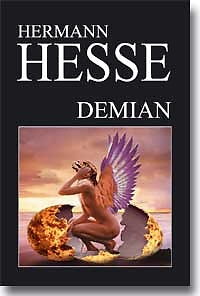Emil Sinclair is a young boy raised in a bourgeois home, amidst what is described as a Scheinwelt, a play on words that means "world of light" as well as "world of illusion". Emil's entire existence can be summarized as a struggle between two worlds: the show world of illusion (related to the Hindu concept of maya) and the real world, the world of spiritual truth. In the course of the novel, accompanied and prompted by his mysterious classmate 'Max Demian', he detaches from and revolts against the superficial ideals of the world of appearances and eventually awakens into a realization of self.
Since at least 1914, if not 1909, Hesse had been encountering the newly growing field of psychoanalysis as it moved through the German intellectual circles. During the 1910's Hesse felt that his psychological difficulties which he had had as a youth and which he still felt torn by needed to be dealt with through psychotherapy. In 1916-17 he underwent treatment through psychoanalysis with Dr. Josef Lang, a disciple of Carl Jung. Through his contact with Lang and later, in 1921, from having psychoanalysis done by Jung, Hesse became very interested in Jungian analysis and interpretation. Demian is inundated in both Jungian archetypes and Jungian symbolism. In addition, psychoanalysis helped Hesse identify psychological issues which he had experienced in his youth, including internal tension caused by a dualistic interpretation of the world which he had held between his own carnal instincts and the strict moralism of his parents. Such themes appear throughout Demian as semi-autobiographical reflections upon Hesse's own exploration of Jungian philosophy.
